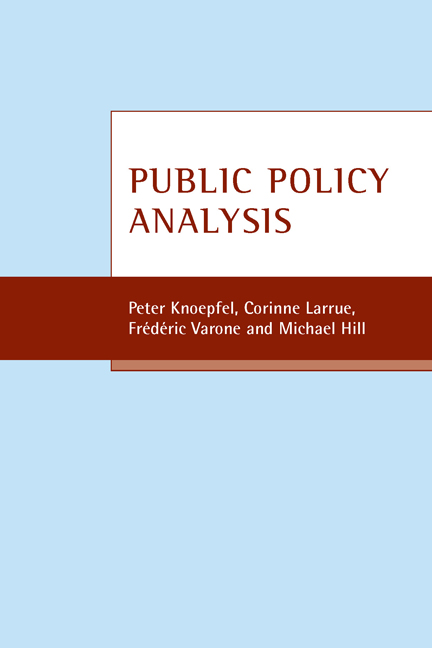eight - Policy programming
Published online by Cambridge University Press: 14 January 2022
Summary
The first product to be explained as part of the programming stage of a public policy is the political-administrative programme (PAP). The PAP defines the legal bases for the objectives, intervention instruments and operational arrangements of the public action. This group of elements also incorporates decisions on the administrative process and organisation of the implementation of the policy, that is, the political-administrative arrangement (PAA) that is understood here as the second product to be explained. The PAP then partly (pre)defines the intermediary acts of the policy, that is, the decisions concerning the action plans (APs) that define the priorities of the application of the PAP in terms of time and space and between the different social groups. Finally, it provides – more or less precise and restrictive – indications with respect to the administrative production of more or less formalised final measures (outputs) creating a direct link, either legal or factual, between the policy's target groups and the competent implementing public bodies. The concepts ‘action plan’ and ‘final formalised measure’ will be discussed in the next chapter that deals with the implementation stage and its products (see Chapter Nine).
In effect, we consider that the programming stage of a policy is complete when the two products, the PAP and PAA, are empirically identifiable. Thus, the following paragraphs explore the constituent elements of each of these two pillars of the policy process. As with the product ‘political definition of the public problem’ (PD), we place particular emphasis on the operationalisation of the dimensions specific to the PAP (see Section 8.1) and the PAA (see Section 8.2) so as to facilitate the application of these concepts in the course of empirical research. Finally, we identify the principal actors, the resources and institutional rules mobilised during the process of formulation and formal adoption of a policy's PAP and PAA (see Section 8.3).
8.1 Political-administrative programme (product no 2)
PAP represents the set of regulatory acts and norms that parliaments, governments and the authorities charged with execution consider necessary for the implementation of a public policy. The PAPs of different policies can vary in terms of their level of detail (variable regulatory density), degree of centrality (national and/or regional/local authority definition of the PAP), and degree of coherence (the internal appropriateness of the constituent elements).
- Type
- Chapter
- Information
- Public Policy Analysis , pp. 151 - 186Publisher: Bristol University PressPrint publication year: 2007



